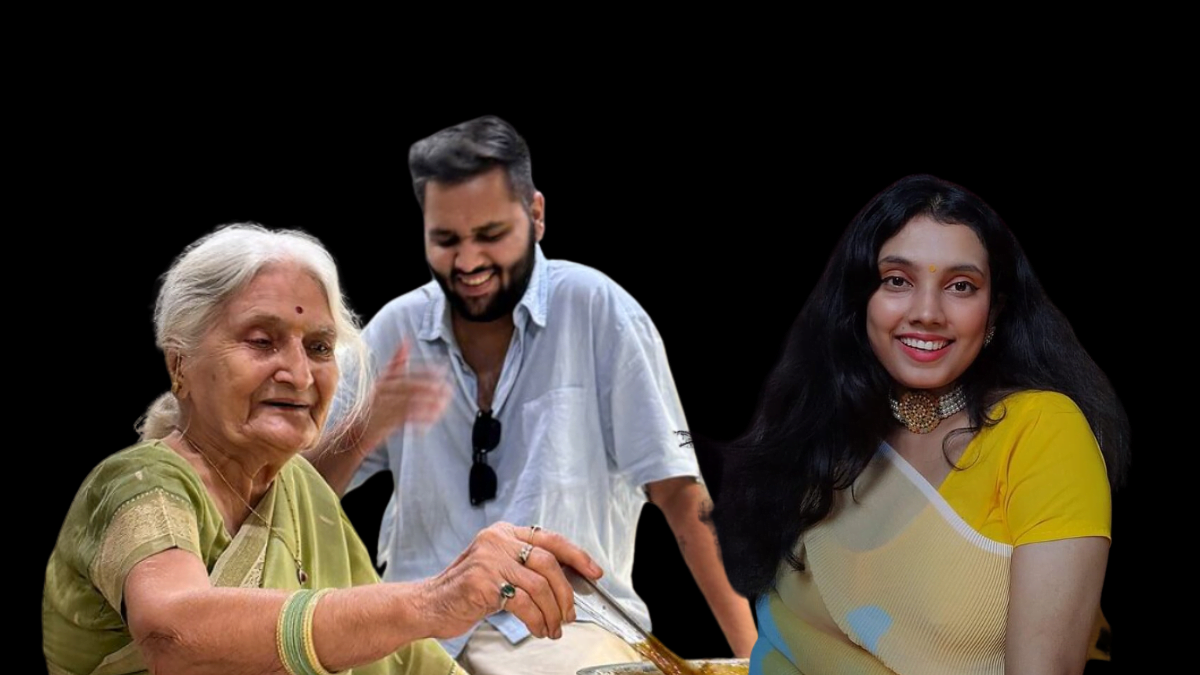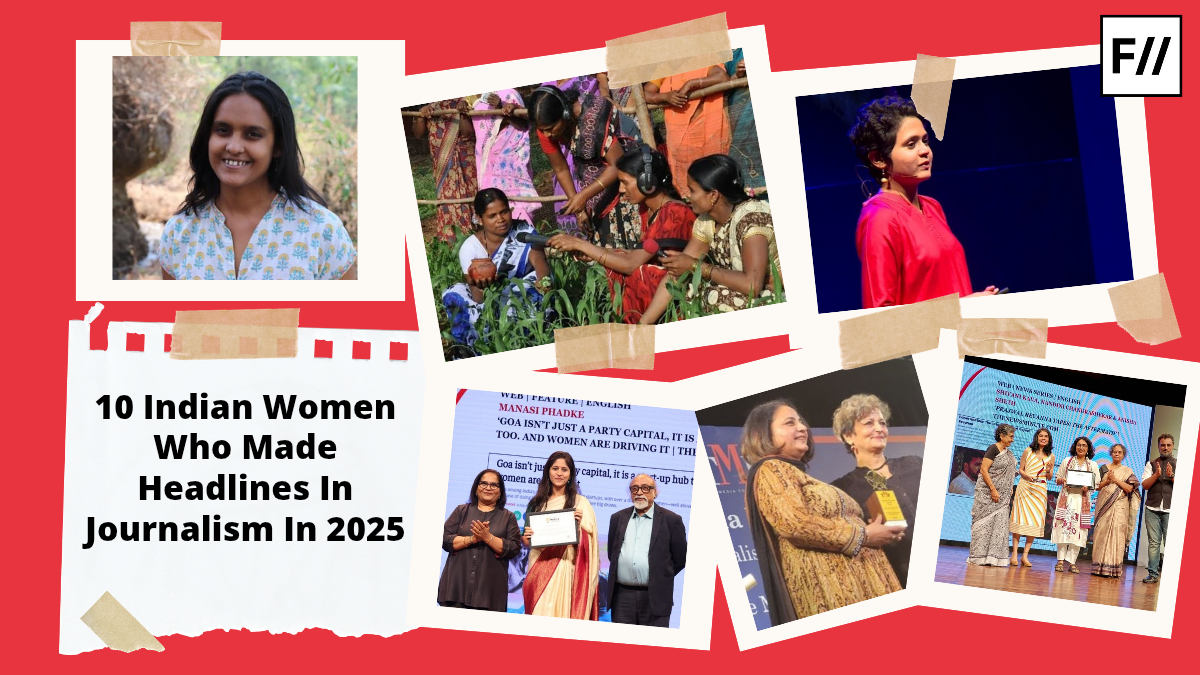A woman’s essence being limited to the kitchen is not a novel idea. It has been normativised for years. But what happens when the breadmaker also becomes the bread earner?
Food holds great power. The Great Indian Kitchen (2021) portrays the tediousness and repetitiveness of everyday chores in the kitchen making the audience almost a close spectator of the source of female rage. It can bring communities closer and at the same time act as a medium of protest. The latter’s portrayal can be seen in a very provocative scene in The Help (2011), where Minny (portrayed by Octavia Spencer), bakes Celia (played by Jessica Chastain), her obnoxiously rude employer a cake made of a ‘special ingredient,’ after Celia ruins Minny’s reputation as a maid by wrongfully accusing her of stealing. This leaves Minny with no jobs so she seeks revenge by telling Celia, “Eat my shit,” feeding her a cake she made out of her ‘shit.’
For ages, women have been told that they belong in the kitchen and feminist protests in the subversion of such norms have involved gendering spaces that were not accessible to women. With private spaces constantly being recorded and broadcasted, we are now witnessing a change. We now live in a world wherein opening any social media platform exposes us to a million recipes, well-curated by food bloggers and influencers.
The question is what changes when female influencers monetise their meticulously curated recipes on social media? Does such a practice become a method of feminist subversion of patriarchal norms? Does it lead to the reversal of the male gaze?
Breaking stigmas: Sahini Banerjee’s journey from academia to content creation
Sahini Banerjee, through @Feashts, wields a powerful weapon by reversing the gaze on women being limited to the kitchen. She began cooking to defy her mother who “did not want her to cook or go in the kitchen.” She builds a “cultural dictionary” by performing and recording videos in her imperfectly yet perfectly organised kitchen not as a chef but as a ‘home cook.’ She showcases Indian cuisine like no other by not limiting her dishes to just naan and butter chicken but documenting the preparation of indigenous regional dishes of various Indian states. Banerjee also addresses stigmas attached to Indian food in terms of its aromas and practices like eating with one’s hands empowering many to reclaim their food-making and food-eating practices. She encourages her followers to break free from appropriating Western sensibilities when consuming and cooking Indian food.

Banerjee’s videos often start with a catchphrase, “Ei Sunny, Ki Khabi?” (Hey Sunny, what will you eat?) asking her husband what he will eat. She then proceeds to make what she pleases defying her husband’s wishes playfully. She goes on to feed him what she has cooked, making Sunny question his previous preference as he is seen thoroughly enjoying what Sahini chose to prepare. This itself is a powerful visual.
As a woman in the kitchen, she is seen reclaiming her agency by preparing the food she wants to prepare. Sunny is also shown helping her in the kitchen and recording videos for her. In essence, it is a team effort and a pleasure to watch. The @feashts has a whopping 610k followers on Instagram, giving Sahini a platform to collaborate with brands and restaurants, monetising her activities in the kitchen and more importantly giving her a voice.
From breadmaker to bread earner: Vijay Nischal defying ageism
Dadi Ki Rasoi (@dadikirasoi), also known as Vijay Nischal (Dadi) has 1.5 million followers on Instagram. She has proved that ‘age is just a number,’ as even at the age of 85, she chose to follow her passion for food. Nischal was a teacher because as she recalls that was the only occupation women were allowed to pursue in the 1970s. After her retirement, she was compelled to become a homemaker. Her grandson, Krish, had an idea to start her YouTube cooking channel. This gave her a platform to showcase her talent and follow her passion for food.
What was earlier a chore she performed to fulfil her responsibilities as a homemaker, translated into a career she draws joy from. The overwhelming response to her videos on YouTube was a driving factor in Dadi’s success. Her witty rhymes introduce the dishes she is about to prepare to add a spicy twist to her reels. She exudes warmth and one feels cared for while watching her videos.
From content creation to entrepreneurship: Kabita’s journey to reclaim herself
Another story to bring to light is of Kabita Singh who runs a YouTube channel named Kabita’s Kitchen (@KabitasKitchen). She recalls that she was earlier known as either “Singh Ji’s daughter, Manish’s wife or Rayan’s mother but now she is recognised as Kabita’s Kitchen.” She has a total of 16 million followers who encourage and appreciate her culinary skills. She edits and uploads the videos on her own and these are skills she has acquired by watching videos on YouTube after she became a mother. After three months of her consistent efforts, her channel was monetised. She recalls that she had received one dollar as a payment but for her that amounted to receiving a hundred dollars. Her eighty-ninth video of “Bread Gulab Jamun” went viral giving her channel new momentum.
What is interesting about this recipe is that the making of an authentic Gulab Jamun requires many expensive ingredients, but her recipes cater to even those who do not have access to such ingredients. Her channel democratises food preparation practices by making them accessible to individuals of varying income strata. Her videos do not showcase a fancy kitchen with pricey kitchen equipment.
Kabita says that she wanted to be relatable, reassuring her viewers and subscribers that they too could replicate the recipes she was sharing. She gauged that there is a gap when it comes to cooking content. People craved a ‘homely feeling,’ with attention to detail. Therefore, she strengthened her virtual community by answering all of the questions that her viewers posted on her videos.
Kabita claims that such practices are necessary because people feel an emotional connection with her, making her channel unique. She has grown her channel with her earnings as a content creator reinvesting all the money she earned through social media platforms. She emphasises that she did not take any money from her husband to buy new equipment because she wanted to do this on her own. Kabita is now an entrepreneur, owning her brand of masalas. Her journey is a testament to female subversion by inhabiting norms, and reversing the male gaze to gain financial independence.
The content produced and consumed is ‘private by choice, and public by default.’ Therefore, when the breadmaker becomes the bread earner, it challenges a well-contested area in the feminist discourse- the public-private dichotomy. The monetisation of these acts can lead to the emancipation of women whose role was limited to only preparing food as a ‘responsible homemaker.’
References:
- Mahmood, Saba, 1962-2018. Politics of Piety: The Islamic Revival and the Feminist Subject. Princeton, N.J. : Princeton University Press, 2012.
- Boyd, Danah. “Social Network Sites as Networked Publics: Affordances, Dynamics, and Implications.”
- In Networked Self: Identity, Community, and Culture on Social Network Sites (ed. Zizi Papacharissi), 2010, pp.39-58.
About the author(s)
Sneha Roy is a PhD Student at the Geneva Graduate Institute. Her work looks at the intersection between capitalism and feminism, studying the burgeoning phenomenon of neoliberalised versions of feminism.




